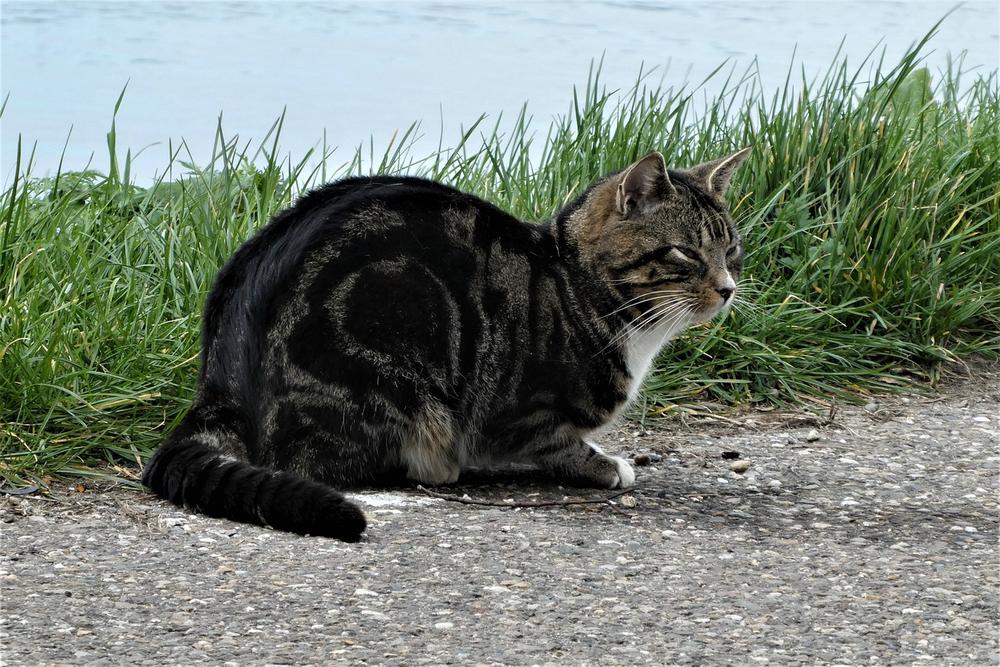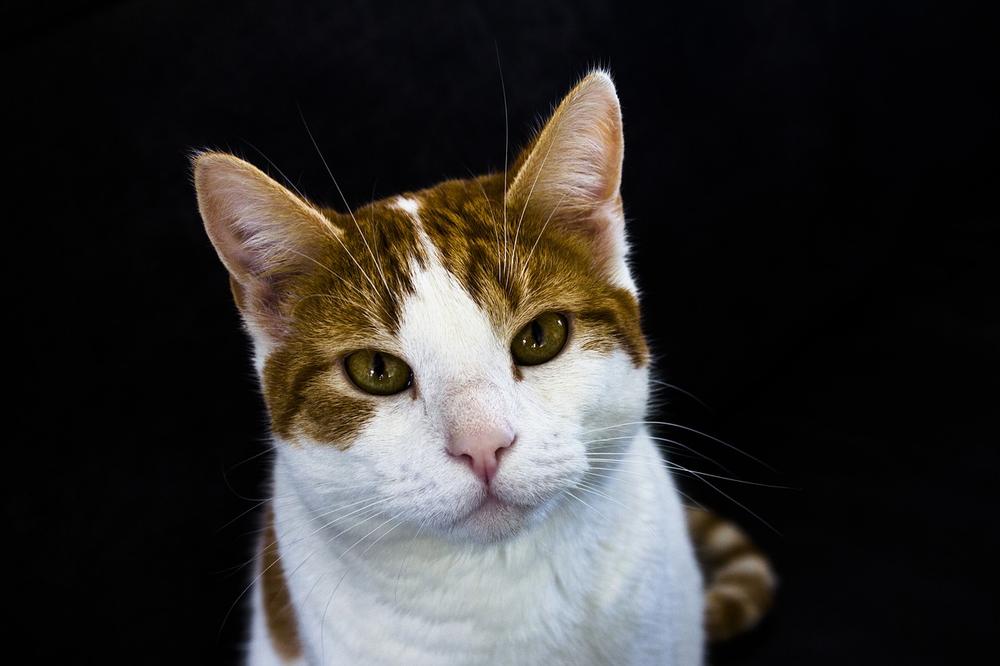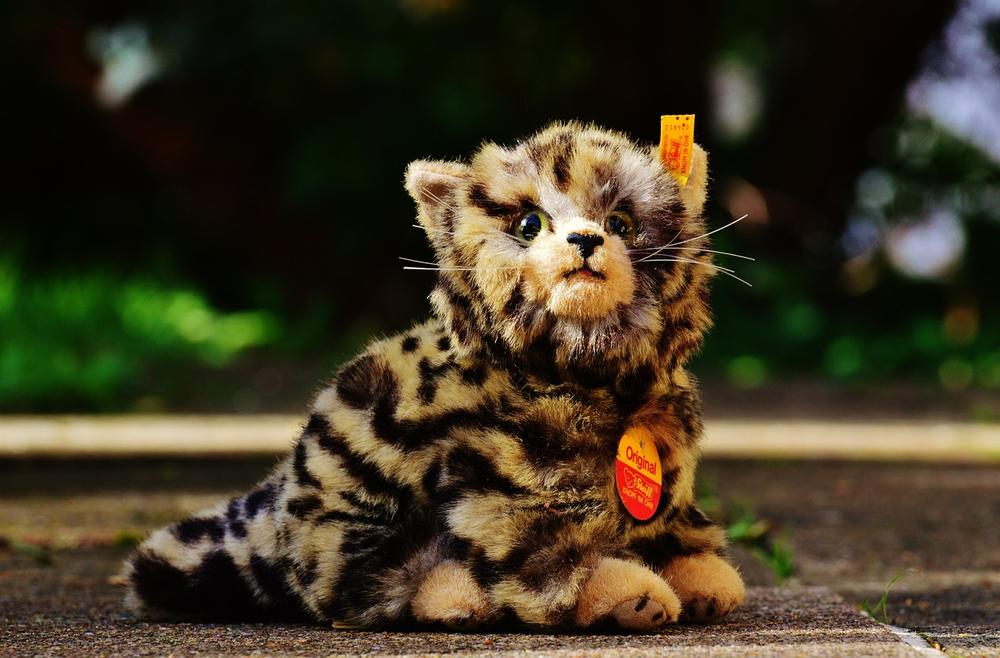Is It Normal Pet Cats to Chew the Corners of Inedible Things?

Let me know if you agree:
Having a pet cat can be a whirlwind of emotions. 😺
One minute they're cuddling up to you, and the next, they're gnawing on your favorite chair like it's their last meal.
It's enough to make you question your sanity.
But don't worry, I've got all the answers.
Let's dive in.
Is It Normal for Cats to Chew on Things?
Cats chewing is totally normal, you know?
They do it for a bunch of reasons.
Let me break it down for you:
- Chewing helps them exercise their jaw muscles. It's like a trip to the gym but for cats.
- They gnaw on stuff to keep their dental health in check. No need for a toothbrush when they have sharp teeth, right?
- Chewing satisfies their playful instincts and keeps their minds busy.
- Cats love exploring and chewing allows them to investigate things through taste and texture.
But not all chewing is cool with cats.
You gotta watch out for any weird patterns or behaviors.

Here are some signs that should raise concern:
- Chewing non-food items could be a sign of underlying medical conditions like hyperthyroidism, diabetes, brain disease, dental disease, anemia, or gut diseases.
- Sometimes, they chew because something's missing from their diet.
- Excessive chewing or eating of non-food stuff might indicate a behavioral condition called cat pica, where they compulsively eat weird stuff.
- Excessive chewing might also mean they're trying to alleviate dental pain.
When dealing with chewing cats, be patient and observant.
If you notice anything strange, it's smart to talk to your vet for proper diagnosis and treatment options.
After all, we just want what's best for our furry friends! 😺
Main points I'll expand upon further down this article:
- Cats may chew on non-food items for various reasons, such as pica or dental pain.
- Chewing can lead to serious health risks, including blockages or choking.
- Swallowing cardboard can cause damage and require immediate veterinary help.
- Prevent access to valuable or toxic objects and address pica promptly.
- Preventative measures, such as bitter sprays or special covers, can discourage chewing.
- Engaging cats with toys and puzzles can curb undesirable chewing habits.
- Contacting a veterinarian for advice on reducing chewing behaviors can be helpful.
- Reduce stress and anxiety to decrease chewing behavior.
- Providing alternative toys and redirecting chewing towards safer options is important.
- Teething kittens may chew to relieve discomfort, but it should be discouraged.
But what factors drive cats to chew?
And could it be a sign of something more serious?
Let's dive deeper into the various causes of chewing behavior in cats and explore how these factors can affect your furry friend's all in all well-being.
You won't want to miss this!
Why Does My Cat Chew on Non-Food Items?
Cats chew on non-food items due to various reasons such as stress, anxiety, hunger, dental problems, and imbalances in nutrition. It can also be a result of boredom, lack of social skills, or seeking attention. Providing appropriate chew toys and treats can help, but persistent issues should be addressed by a vet.
Cats chew on things that aren't food for various reasons.
You see, stress, anxiety, and frustration can cause them to munch on stuff they shouldn't.
It's called pica, a fancy term for when cats go all in on non-edible items.
I know, it's weird.
But there's more to it.
Medication side effects or hunger can make your cat crave things that aren't meant to be eaten.
And then there are dental problems, imbalances in nutrition, and tummy troubles that can drive them to chew on random objects.
Cats, they're complicated creatures, aren't they?

Wait, there's even more!
Your furry pal might also chew out of boredom, lack of social skills, aggression issues, or just to seek attention and familiar scents.
Kittens chew during their exploration and teething phase.
If they were weaned too early or have pesky parasites, this chewing habit may stick around longer.
So what can you do about it?
Well, offering them appropriate chew toys can redirect their urge to chomp.
Healthy treats could satisfy their craving without causing harm.
But if the problem persists, it's best to take your playful feline to the vet for further investigation. They'll know what's going on.
But what you may not realize is that chewing on non-food items can actually pose potential dangers for your furry friend.
What Are the Hazards of Cats Chewing Non-Edible Things?
Chewing non-edible things can be dangerous for cats
Do you know that cats have this instinct to chew on things they shouldn't?
It can actually be really risky.
One major danger is choking.
Cats can easily swallow something and get it stuck in their throat, making it hard for them to breathe.
Trust me, you don't want that to happen!
Another danger is gastrointestinal blockages.
When cats swallow things they shouldn't, it can cause blockages in their digestive tract.
This can be extremely painful and even life-threatening.
Definitely not good for your furry friend.
And as if that's not bad enough, there's also the risk of poisoning.
Some non-edible things may contain toxic substances that can harm your cat.
You definitely don't want your cat eating anything that could be harmful.
How to prevent hazards from chewing
As a responsible cat owner, there are things you can do to prevent these hazards. First, keep an eye out for any symptoms. If you notice vomiting, poor appetite, lethargy, or tummy pain in your cat, it could be because they ate something they shouldn't have.
In that case, it's time to call the vet.

Here's a helpful tip:
Keep valuable or toxic objects out of your cat's reach.
Cats can't resist chewing on things, so it's better to be safe than sorry.
Addressing pica and specific chewing habits
Some cats have a condition called pica, where they have the urge to eat non-food items.
If your cat has pica or other obsessive-compulsive chewing behaviors, you should address it promptly.
For cats with periodontal disease, dental cleaning under anesthesia might be recommended.
Taking care of those chompers is important too.
Lastly, be cautious of specific objects that tempt your cat, like ribbons, plastic bags, wires, or cardboard. Either keep them away or supervise your cat closely. It's all about preventing accidents and toxic ingestion.
So, my friend, keep an eye on your cat and ensure they stay away from things they shouldn't chew on.
Their health and safety are in your hands!
So, with all the hazards that come with cats chewing on non-edible things, how can you ensure their safety and redirect their behavior towards appropriate alternatives?
Well, I'm glad you asked!
In the next section, I'll reveal some effective strategies to prevent and manage your cat's chewing habits.
From engaging toys to stress-relief techniques, there are plenty of options for you and your feline friend to explore.
Let's dive in and discover how you can keep your curious cat entertained and out of harm's way!
Stopping a Cat from Chewing on Things
If your cat loves to chew on stuff, you know the struggle. It's frustrating and can burn a hole in your pocket. But don't worry, there are things you can do to tackle this problem and redirect their chewing in a better direction.
- Offer them different types of toys to munch on - chew sticks, dental toys, or stuffed animals.
- Keep switching up the toys every few days to keep their interest alive and avoid boredom.
- Catnip can be a good way to attract your cat towards the designated chewing toys.
- Make certain areas in your house dedicated for chewing by placing scratching posts or cat towers where your furry friend spends most of its time.
- Invest in puzzle feeders that require them to chew in order to get to their food. This way they'll get mental stimulation while satisfying the need to chew.
- If your cat is teething, try freezing wet washcloths and offer them as chew toys. The coldness may help ease any discomfort they're experiencing.
- Ensure your cat gets plenty of playtime and exercise to relieve stress and anxiety, which can contribute to excessive chewing.
Being consistent is crucial when trying to change your cat's chewing habits.

With patience and the right approach, you can help your beloved kitty ditch those destructive chewing habits. ✨
But what if your cat's chewing habit extends beyond toys and onto inedible things like cardboard?
Well, I can offer you some tips on how to redirect this behavior and prevent them from chewing on materials that aren't safe for them:
How Can You Stop Your Cat From Chewing Cardboard?
Here are 8 helpful tips to stop your cat from chewing cardboard:
- Give them other options: try sisal scratching boards or chew toys instead.
- Make their environment interesting: provide mental stimulation and enrichment.
- Tap into their hunting instincts: engage them with interactive toys.
- Keep cardboard out of sight: hiding it will discourage the behavior.
- Say no to cardboard boxes: avoid leaving them lying around.
- Watch for compulsive tendencies: monitor your cat's behavior closely.
- Don't hesitate to consult a vet: seek advice if unusual symptoms occur.
- Understand breed tendencies: certain cats may have a genetic urge to chew on cardboard.
Keeping your cat mentally stimulated is crucial in preventing destructive behaviors like cardboard chewing.
And if you're facing other unique and puzzling behaviors from your feline friend, like chewing cardboard, I've got you covered too.
In my article, you'll discover the reasons behind why a cat would hump a dog.
Curiosity piqued? Uncover the fascinating insights by checking out my blog post, Cat Hump Dog.
When Do Cats Normally Begin to Chew Plastic Things?
Kittens sometimes nibble on plastic items during their exploration phase, which usually starts around 36 months old.
This behavior can also be linked to teething, as kittens might chew on furniture corners to alleviate the discomfort.
Young kittens are often less selective than adult cats, and their higher energy needs could cause them to gnaw on non-food items.
However, it's crucial not to let a kitten bite and chew everything, for this habit may become challenging to break as they grow older.
When Do Cats Usually Stop Chewing on Things?
Cats love to explore and play, which sometimes leads them to chew on things they shouldn't.
But when do cats stop chewing?
Here's what you need to know:
- When kittens are growing their teeth, they tend to engage in chewing behaviors, but they usually outgrow this by around 12 years old.
- Between 1-6 years of age, kittens are more prone to a condition called Pica, where they eat non-food items.
- Kittens may chew on objects, especially during teething discomfort, as they develop adult teeth between 3.5 and 7 months old.
- However, most kittens typically give up the habit of chewing by the time they're 1-2 years old.
- Some cats might keep chewing throughout their lives due to boredom or stress.
- To help redirect their chewing, provide appropriate chew toys and create a stimulating environment.
So, while cats generally outgrow chewing, some may always have a tendency for it.
Remember to offer them suitable outlets for their chewing needs to protect your belongings. 🐱
And that wraps up today's article.
If you wish to read more of my useful articles, I recommend you check out some of these: Why Does My Cat Purr and Bite Me, Why Does My Cat Play in the Litter Box, Why Does My Cat Purr When He Sees Me, Why Does My Cat Want Me to Watch Her Eat, and Why Does My Cat Sit in the Bathtub
Talk soon,
-Sarah Davis